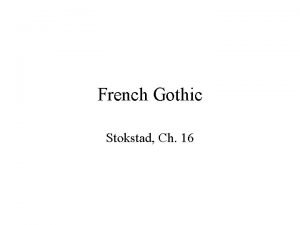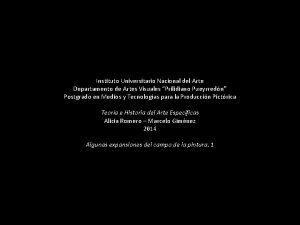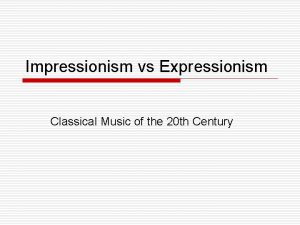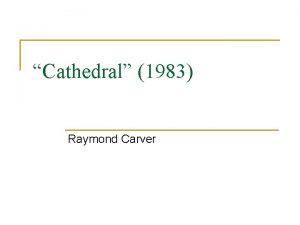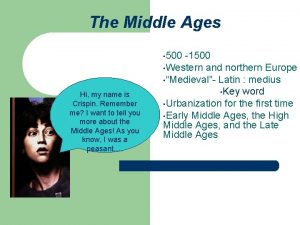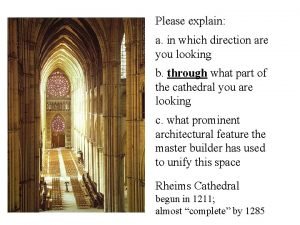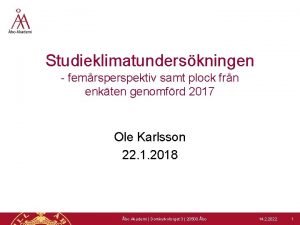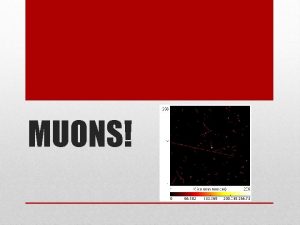Cathedral and Castle in Plock Muons in the







































- Slides: 39

Cathedral and Castle in Plock Muons in the Cosmic Radiation J. Kempa and A. Krawczynska Warsaw University of Technology Off-Campus Płock

A review of measurements of the high muon energy spectra for altitudes close to the sea level and different directions performed with devices placed at various geomagnetic latitudes is presented. The muon spectra and the muon charge ratio, defined as the ratio of positive to negative muon fluxes, are discussed.

MOTIVATION

The sea level average differential muon spectrum at 0 o

Muons in L 3

Measurements of the east - west asymmetry of the cosmic muon flux in Hanoi Pham Ngoc Diep et al. 2004 a) at Θ = 50 o b) at Θ = 65 o

Theoretical Aspect Majority of theoretical calculations of muons and neutrinos in the atmosphere has been done using the following logical schema: Primary Spectrum and Primary Composition High Energy Interaction Model Muon and Neutrino Fluxes Muon charge ratio and electron to muon neutrino ratio

Outline of the talk: 1. Introduction 2. Low energy muons 3. Muon charge ratio 4. High energy muons 5. Conclusions

Introduction

Cosmic-ray muons and neutrinos originate from the decay of pions and kaons produced by the interactions of high-energy primary nuclei Acr with atmospheric ones Aair. Acr + Aair ± , K 0 + + + µ + e+ + e + µ - - + - e - + e + . .

Low energy muons (below 100 Ge. V/c)

Absolute differential muon fluxes at various zenithal angles The absolute differential muon data in the energy region 0. 2 Ge. V/c to 100 Ge. V/c are fitted by parabola on a log – log scale: log I ( ) = a ln 2 p + b ln p + c , where p is the muon momentum in Ge. V/c.

The values of the parameters a, b, c used for vertical and horizontal showers. As an example the values for 20 o are presented. Angle Vertical 0 o Horizontal 88. 5 o 20 o a b c -. 1292 . 0005 -. 266 . 002 -2. 600 0. 002 -. 175 . 002 +. 998 . 002 -8. 60 0. 01 -. 1245 -. 2659 -2. 5621

For other angles the values of the a and b can be found from the following approximation : Y = p 1/(1/ + p 2 ) + p 3 + p 4 exp(-p 5 ) , where Y means a or b respectively and is the zenithal angle in degrees. The coefficients p 1 , p 2 , p 3 , p 4 and p 5 are: pi a b p 1 - 0. 8816 10 p 2 - 0. 111710 -3 - 0. 989110 -4 p 3 - 0. 1096 + 4. 0395 p 4 - 0. 196610 -1 - 4. 3118 p 5 + 0. 204010 -1 - 0. 923510 -3 -4 + 0. 416910 -2

The following approximation for parameter c can be used: c = p 1 2 + p 2 + p 3 + p 4 exp(-p 5 ) , where is the zenithal angle in degrees. The coefficients p 1 , p 2 , p 3 , p 4 and p 5 are: pi c p 1 - 0. 351610 -3 p 2 +0. 886110 -2 p 3 - 2. 5985 p 4 - 0. 874510 -5 p 5 - 0. 1457

The sea level average differential muon spectrum at 0 o

The sea level average differential muon spectrum at 0 o new data

The sea level average differential moun spectrum at 30 o


The sea level differential positive muon spectrum at 0 o assumed that the ratio + / - is equal to 1. 27 J. Kempa, A. Krawczynska Nucl. Phys. B (Proc. Suppl. ) 151 (2006)

The sea level differential negative muon spectrum at 0 o assumed that the ratio + / - is equal to 1. 27 J. Kempa, A. Krawczynska Nucl. Phys. B (Proc. Suppl. ) 151 (2006)

The collected data of the experimental results of the muon charge ratio for four different experiments and four different rigidity cutoff. Data from Allkofer et al. 1968, Sanuki et al. 2002, Kremer et al. 1999.

+ / =f(E ) M. Goodman 2007 HONDA Lipari

Data plots (after Goodman 2007 ) In the formula, +/ - only depends on Esurfacecosq

In theoretical works about muons we find opposite interpretations of muons data: In the paper J. J. Beatty et al. , 2004 the law energy muon data do not agree precisely with calculations. G. Fiorentini et al. , 2001 proves that from different models it is possible to choose one, which gives the good fit for the law energy experimental muon data. J. Wentz et al. , 2003 state that GEISHA and VENUS do not describe + / - ratio for low energies. In the paper V. Plyaskin, 2003 , results of the GEISHA and GEANT + / - ratio calculations fit experimental data.

High energy muons (above 200 Ge. V/c)

The absolute differential muon fluxes are fitted by the function: (following the T. K. Gaisser 1990)







Integral muon energy spectra




CONCLUSION There a lot of new data of muons and neutrinos that has been gathered recently from new experiments such as L 3+C, CAPRICE, BESS, HEAT, Super-Kamiokande, MINOS FD, Cosmo. Aleph. It seams that we are able to understand describe average muon fluxes in the atmosphere for the momentum higher than 10 Ge. V/c (see: Kempa and Krawczynska 2005, Hebbeker and Timmermans 2002)

There is still a lot of confusion about the measuring of the moun fluxes of very low muon energies of different angles and depths in the atmosphere. There are problems with gathering the data for law energy muons because the fluxes are functions of rigidity cutoff and azimuthal angles (East-West effect). The similar problem exists in measuring neutrinos. The constancy of the total high energy muon fluxes shows the main role of the cascading process in the atmosphere. Correlation between + / - values and rigidity cutoff shows that for higher rigidity the + / - is smaller. There are differences between interpretations of the experimental data from different authors.
 Muons
Muons Annunciation and visitation reims cathedral
Annunciation and visitation reims cathedral French gothic sculpture
French gothic sculpture Melchizedek and abraham reims cathedral
Melchizedek and abraham reims cathedral Louise nevelson sky cathedral
Louise nevelson sky cathedral Consider
Consider Lorenzo maitani orvieto cathedral
Lorenzo maitani orvieto cathedral El duomo milan
El duomo milan Relief sculpture type
Relief sculpture type Instituto universitario nacional del arte
Instituto universitario nacional del arte Borrego health clinic coachella
Borrego health clinic coachella Louise nevelson sky cathedral
Louise nevelson sky cathedral Angouleme cathedral plan
Angouleme cathedral plan Abbey church of sainte foy
Abbey church of sainte foy Sunken cathedral jazz
Sunken cathedral jazz Cathedral 50 miles southwest of paris completed in 1220
Cathedral 50 miles southwest of paris completed in 1220 Raymond chandler cathedral
Raymond chandler cathedral Absolutism definition ap world history
Absolutism definition ap world history St pauls cathedral
St pauls cathedral Cathedral museum
Cathedral museum Stromford cathedral
Stromford cathedral St patrick's cathedral dundalk
St patrick's cathedral dundalk What continent is the philippines on
What continent is the philippines on Amiens cathedral floor plan labeled
Amiens cathedral floor plan labeled Gothic cathedral
Gothic cathedral Speyer cathedral interior
Speyer cathedral interior Confessions westminster cathedral
Confessions westminster cathedral Chartres cathedral floor plan
Chartres cathedral floor plan Salisbury cathedral
Salisbury cathedral Education in middle ages
Education in middle ages Russia 1450 to 1750
Russia 1450 to 1750 Hình ảnh bộ gõ cơ thể búng tay
Hình ảnh bộ gõ cơ thể búng tay Frameset trong html5
Frameset trong html5 Bổ thể
Bổ thể Tỉ lệ cơ thể trẻ em
Tỉ lệ cơ thể trẻ em Voi kéo gỗ như thế nào
Voi kéo gỗ như thế nào Tư thế worms-breton
Tư thế worms-breton Chúa yêu trần thế alleluia
Chúa yêu trần thế alleluia Môn thể thao bắt đầu bằng chữ f
Môn thể thao bắt đầu bằng chữ f Thế nào là hệ số cao nhất
Thế nào là hệ số cao nhất


